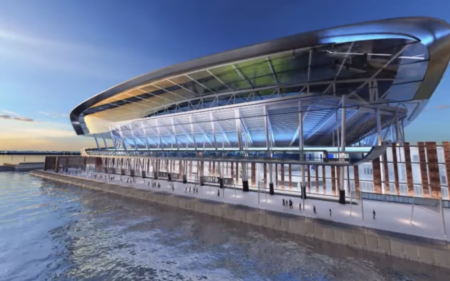Nick Hucker, CEO of Preoday, explains why sports venues need to adopt the latest communications technology to improve game day experiences for both operators and fans
Technology and sport, are they friends or foes? Off the pitch fans are readily embracing anything that enhances their match experience. On the pitch, just say VAR to a soccer fan and you can expect a debate that rages into the night.
Of course, there’s huge money to be made in sport but there are also hefty costs associated with running stadia and the games they host. One of those costs comes from the adaptation of stadia to meet fan demand. Difficulties arise from the structure of old buildings, constructed when the idea of the internet, let alone mobile apps and browsing, were unimaginable.
But adapt they must. The wi-fi standard, 802.11, was not designed with stadia in mind. With thousands of fans in a single area, interference is common and total aggregate bandwidth is limited. Given that most clubs now have their own mobile apps, and their live audiences enjoy browsing, ordering food, commenting on the game and communicating with fellow fans throughout the event, not being able to connect is a cause of frustration.
It’s time for stadia to meet changing requirements – and that includes making use of a new standard, 802.11ax, which specifically addresses high-density deployments, such as those found in stadia.
The English Premier League’s Tottenham Hotspur FC is one club that has talked at length about its new stadium plans. With its new venue (which will have 60 food outlets) it claims to be “driving innovation and using modern technology to enhance the fan experience, with connectivity across the whole venue and flexibility to cater for future demands and developments”.
Of course, changes like this will eat into clubs’ budgets, but they should be being made with the confidence that such improvements will lead to better fan experiences and, hopefully, increased cash flow.
Club operators, under pressure to drive more revenue through the stands, are placing extra emphasis on half-time hospitality. Still, given staff can only actively serve so many people in 15 minutes, how much can realistically be achieved?
One solution is digital click-and-collect technology. If fans can use their mobile app to place orders in advance, then food and drink can be pre-prepared to exact numbers, thereby shortening queues, smoothing bar operations and encouraging people to spend more money. The only drawback, again, is that connectivity might put off some from adopting the technology. It shouldn’t.
At Bath Rugby’s Recreation Ground, one of the UK’s oldest stadia, sketchy internet connections mean most mobile orders are placed prior to match kick-off. Despite this, upon introducing a click-and-collect app for its main bar, the club immediately saw 5% of its bar sales going through the platform. Greater connectivity (as well as good weather and confidence of a win!) can only lead to an increase in these figures as fans place orders throughout the match.
Enabling fans to skip the bar queue isn’t the only reason stadia should look to improve their connectivity. Innovations in staff management and live mapping technologies are being used to streamline operations, and extra viewing screens are being installed to enhance game day experiences for fans – all of which require a strong internet connection.
To continue giving fans amazing experiences, and for any stadium looking to improve its revenue, it is clear that stadium connectivity is key.
September 26, 2018





